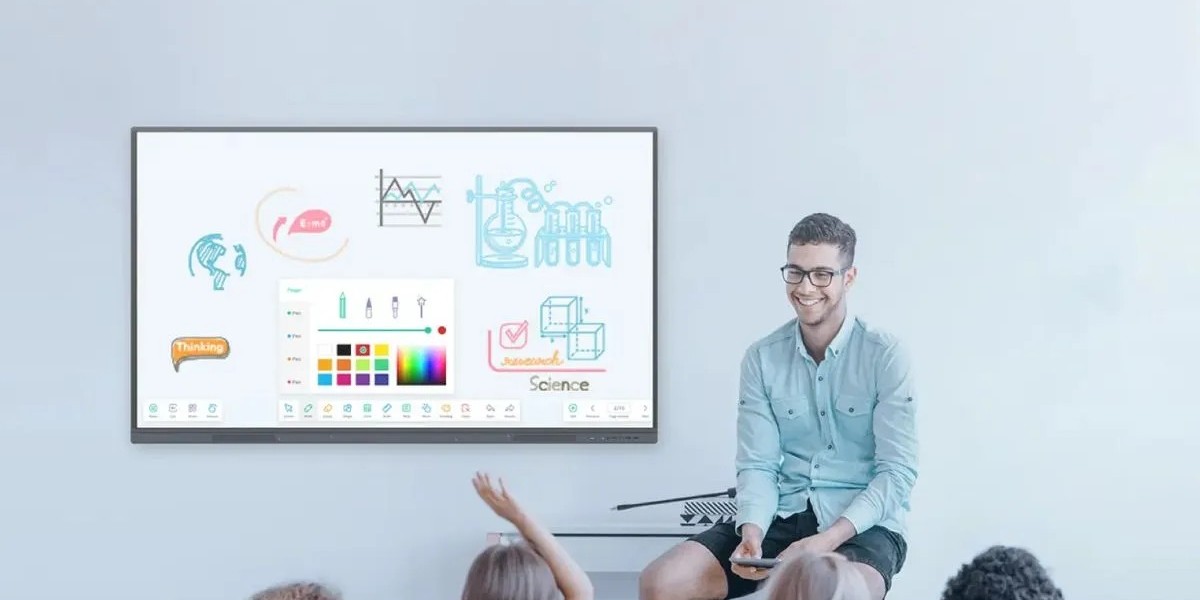In the rapidly evolving world of technology, both Smart TVs and interactive displays have become integral to modern life. While they may appear similar at first glance, they serve distinct purposes and are tailored to different user needs. This article will explore the key differences between these two technologies to help you make an informed decision about which one suits your requirements.
1. Purpose and Use Cases
Smart TVs are primarily designed for entertainment. They allow users to stream content from various online platforms, watch live TV, and access a range of applications, such as gaming and social media. Smart TVs come with built-in operating systems like Android TV, Roku, or proprietary systems from manufacturers like Samsung or LG. These devices are perfect for home use, providing a seamless and immersive viewing experience.
Interactive displays, on the other hand, are designed with collaboration and interactivity in mind. They are commonly used in educational institutions, corporate settings, and public spaces for presentations, meetings, and teaching. An interactive display allows users to engage directly with the screen using touch or a stylus, making it an excellent tool for brainstorming sessions, interactive lessons, and collaborative projects.
2. Screen Size and Resolution
Smart TVs are available in a wide range of sizes, typically from 32 inches to over 85 inches, catering to various room sizes and viewing preferences. They also offer different resolution options, including Full HD, 4K, and 8K, ensuring crisp and vibrant picture quality for entertainment purposes.
Interactive displays are usually larger, starting from around 55 inches and going up to 98 inches or more. They often feature high-resolution screens, commonly 4K, to ensure clear visibility and readability during interactive sessions. The larger screen size accommodates multiple users and extensive interaction, which is essential for collaborative environments.
3. Connectivity and Integration
Smart TVs come with various connectivity options, such as HDMI ports, USB ports, Bluetooth, and Wi-Fi, allowing users to connect external devices like gaming consoles, soundbars, and smartphones. They also support streaming services and can integrate with smart home ecosystems, providing convenience and versatility for home entertainment.
Interactive displays offer similar connectivity features but with added functionalities for professional use. They support HDMI, USB, and wireless connections, but they also include advanced features like screen mirroring, multiple input recognition, and integration with video conferencing tools. These capabilities make interactive displays a central hub for collaborative work and learning environments.
4. Interactivity and Control
The primary distinguishing factor between the two technologies is interactivity. Smart TVs offer limited interaction through remote controls, voice commands, and mobile apps. Some models may have basic touch capabilities, but these are not as advanced or responsive as those found in interactive displays.
Interactive displays are built for touch and stylus input, providing a highly responsive and intuitive user experience. They support multi-touch functionality, allowing multiple users to interact with the screen simultaneously. This level of interactivity is crucial for dynamic presentations, interactive lessons, and collaborative workspaces.
5. Software and Applications
Smart TVs come with pre-installed apps and access to app stores, enabling users to download additional applications. The focus is on entertainment apps like Netflix, YouTube, and Spotify, as well as games and social media platforms.
Interactive displays are equipped with specialized software designed for collaboration, education, and productivity. They often include features like digital whiteboards, annotation tools, and screen recording. Additionally, they can run business applications, educational software, and integrate with cloud services for seamless sharing and collaboration.
Conclusion
While both Smart TVs and interactive displays offer advanced features and connectivity, their core purposes and functionalities differ significantly. Smart TVs are ideal for entertainment and home use, providing access to a wide range of content and applications. Interactive displays, however, are designed for interactive and collaborative environments, making them essential tools in educational and professional settings. Understanding these differences can help you choose the right device for your specific needs.



